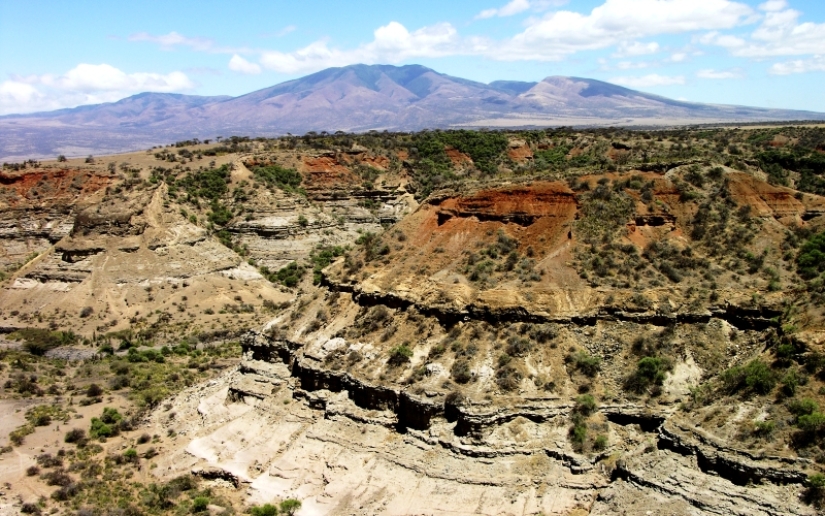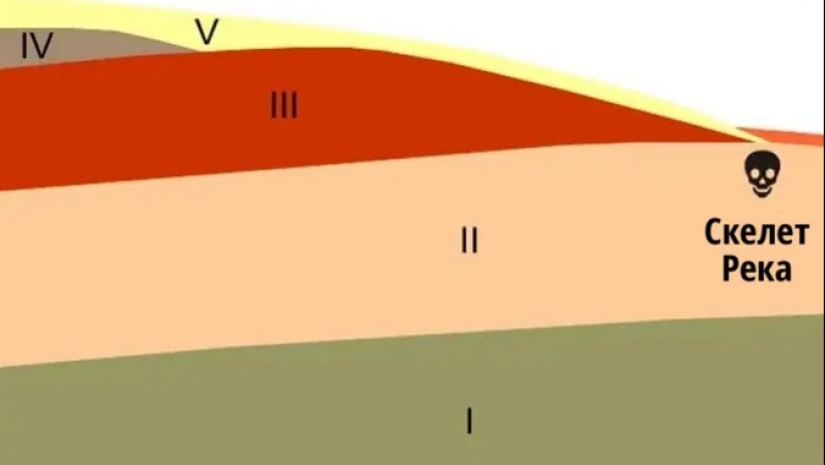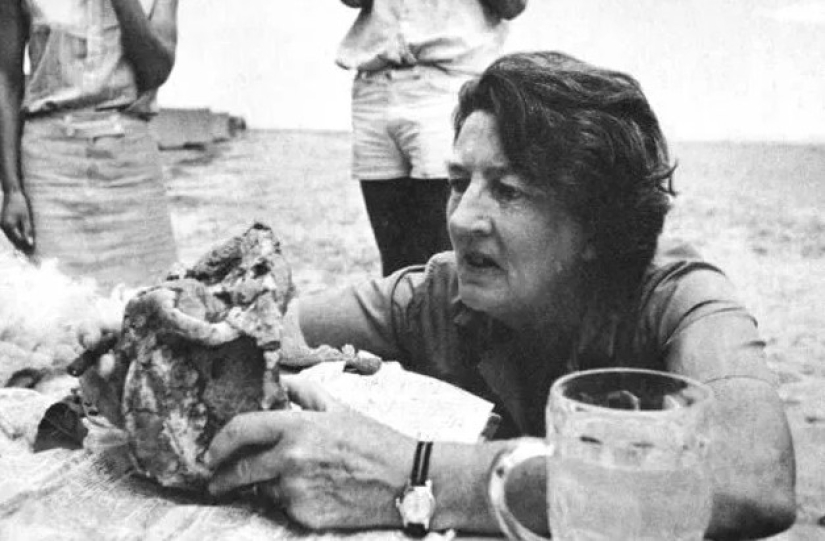The Mysterious Skeleton of Hans Reck, Who Lay in the Ground for a Million Years
Categories: Africa | History | Science
By Pictolic https://pictolic.com/article/the-mysterious-skeleton-of-hans-reck-who-lay-in-the-ground-for-a-million-years.htmlModern humans, similar to us, appeared only about 100 thousand years ago. Among the species that lived before us, there are many of our relatives, but they were very different from Homo sapiens – the intelligent man. Imagine how puzzled and delighted the German volcanologist Hans Reck was when his expedition discovered the remains of a man who lived a million years ago!

An amazing discovery was made in the Olduvai Gorge in Tanzania. This is a 48-kilometer-long volcanic fissure that has preserved the entire history of mankind for us. It is not known for certain who exactly discovered this place first. But there are tales in scientific circles: supposedly in 1910, this paradise for archaeologists and paleontologists was accidentally discovered by a German professor of entomology.

According to legend, the scientist was chasing a butterfly with a net near the crater of the Ngorongoro volcano and suddenly fell into the gorge. Fortunately, he managed to avoid serious injuries, but he lost consciousness from the impact with the ground. Having come to, the researcher discovered bones of ancient people, animals and primitive tools around him. But the first to explore the Olduvai Gorge was the physician and anthropologist Wilhelm Kattwinkel.
In 1910–1911, a German explorer arrived at the Ngorongoro volcano as part of an expedition. His main task was to study the “sleeping sickness” spread by the tsetse fly. But when he came across many ancient bones in the gorge, he could not resist the temptation to explore the place. It was Kattwinkel who gave the gorge the name “Olduvai”, although by mistake. He heard the word “Olduvai” from the Maasai people and decided that it was the name of the area. In fact, the Maasai used the word oldupai to describe the sisal growing there.

Wilhelm Kattwinkel discovered many bones of ancient people from different eras in the gorge, as well as parts of the skeleton of a three-toed horse. After him, other expeditions came to Olduvai Gorge, not always related to paleontology. In 1913, volcanologist Hans Reck could not resist the desire to dig a little in the slope of the gorge - and incredible luck awaited him.
Hans Reck came across a well-preserved human skeleton, which he estimated to be 1–1.5 million years old. The bones were perfectly preserved by volcanic lava: they were sealed inside a monolithic block of rock, and only a small part was visible from the outside. The slope of the gorge had clearly defined layers, which made dating the finds much easier. This was an important discovery: until then, human remains older than 100 thousand years had not yet been found.

But Hans Reck was plagued by doubts: what if the ancient African was buried at great depth by his fellow tribesmen or was buried accidentally, for example, due to a collapse? In this case, the remains could have ended up in more ancient layers much later. But a thorough analysis of the slope morphology dispelled the scientist's fears. The skeleton was found in the upper part of layer II. Above it were layers III, IV and V, but they were completely washed away by erosion.
Layer II was between 1.15 and 1.7 million years old and was the only one that was perfectly preserved. In his diary, Hans Reck wrote:

English scientist George Grant McCurdy, a leading anthropologist from Yale University, carefully examined the bones and confirmed their ancient age. Thanks to this, Hans Reck became a real celebrity. His discovery turned the idea of human origins upside down, making the remains found more than ten times older than any previously known human traces! Reck returned to Europe, taking the skull with him, and the rest of the skeleton, along with the stone block, went to sea on a ship.
When all the parts of the skeleton from Olduvai Gorge reached Europe, they were carefully removed from the rock. During this painstaking work, scientists were once again convinced that a later burial was excluded. The age of the skeleton exactly matched the age of the other bones from the second layer. George Grant McCurdy emphasized that this was a human skeleton, and not the remains of a Neanderthal or some other ancient species.

Many scientists were skeptical of the discovery. British anthropologist Louis Leakey even claimed that the skeleton from the gorge was no more than 17 thousand years old. But in 1931, Leakey and his colleagues visited Olduvai Gorge, made a number of interesting finds and became convinced that the bones had indeed been extracted from layer II, which was over a million years old.
Hans Reck and Louis Leakey have already become targets of ridicule together. Under pressure from critics, both scientists suddenly agreed that the skeleton was much younger than the geological layer. Perhaps the scientists were tired of years of fighting over old bones and simply wanted to live and work in peace.
Louis Leakey returned to Olduvai Gorge several times after the war – in 1951 and 1959. By that time, these lands had ceased to belong to Germany and had become part of the British colonies. The anthropologist carefully avoided categorical statements and tactfully avoided the topic of the controversial skeleton both in interviews with journalists and in scientific discussions.

But fate gave Louis Leakey an unexpected surprise. In 1960, he and his wife Mary were working in the gorge again and discovered a 1.75 million-year-old skeleton – again in that same ill-fated Layer II. However, this skeleton did not belong to a modern man, but to his ancestor – Homo habilis, or handy man. It was the first such specimen found not in Asia, but in Africa.
Unfortunately, today it is no longer possible to find out for sure who was right – Hans Reck or his critics. The mysterious skeleton from Olduvai Gorge disappeared during World War II. Only fragments of the skull have survived to this day, but no one can say for sure that these are the remains that Reck found. Even if radiocarbon analysis is carried out, it will be extremely difficult to prove anything. Perhaps we will never know whether our ancestors existed a million years ago or whether scientists were wrong back then.
So, the mystery of the Olduvai Gorge skeleton remains unsolved, and scientific debates about the age of our ancestors continue. History knows many cases when discoveries ahead of their time were questioned or even forgotten.
Do you think new discoveries are possible that will completely change our understanding of human origins? Or are all the major discoveries already behind us? Share your thoughts in the comments!
Recent articles

In September 1839, the solemn laying of the new Cathedral of Christ the Saviour took place. The construction lasted almost 44 ...

It is unlikely that someone will be a revelation-a phrase that people and things change with time. An obvious fact, but, lost in ...

If you think that sleep disorders are a problem of a modern person, then you are deeply mistaken. Insomnia has tormented people at ...